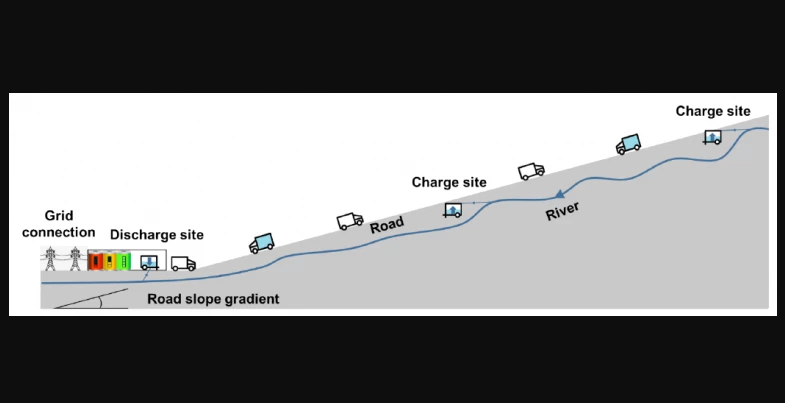While hydroelectric dams are capable of generating a lot of electricity, they drastically disrupt the environment. Scientists have now proposed a simpler but still effective alternative, in which electric trucks replace such dams.
In a typical hydroelectric facility, a dam is built across a river, causing a reservoir to form directly upstream of that dam. When a gate in the dam is opened, water from the reservoir flows through and drops down to a lower elevation. As it does so, it spins up turbines which generate electricity.
Unfortunately, formation of the reservoir involves the flooding of land which may previously have contained forests, crops, or even people's homes.
The presence of the dam can also significantly slow the flow of the river, raise the water temperature, and cause sediment to accumulate within the water. Additionally, dams often block the upstream migration of spawning fish, plus fish may be harmed when travelling downstream through the gates.
That's where the Electric Truck Hydropower system is intended to come in. The concept, which could be put to use in mountainous regions with steep roads, is being developed by scientists from the International Institute for Applied Systems Analysis.
Initially, at a "charging site" located at a high elevation on a mountain river, large tanks would be filled with water from the river. Each tank would be loaded onto a separate electric truck, which would then carry the tank down the mountain. Due to the steepness of the road, the driver would essentially just be riding the brakes all the way down, with the water greatly adding to the vehicle's inertial mass. Thanks to a regenerative braking system, the trip down would generate electricity which would in turn be used to charge the truck's battery.
Upon reaching a "discharge site" at the bottom, the tank would be removed from the truck, the water contained within it would be released back into the river, and the truck's battery would be removed so it could provide electricity to the municipal grid. The truck would then be loaded up with an empty tank, along with a replacement battery with just enough of a charge to get the vehicle back up to the charging site.

The idea is that a fleet of the trucks would be continuously travelling between the two sites, picking up and dumping out water. Importantly, the amount of electricity they consumed on the way up would be considerably less than the amount that they'd generate on the way down.
In fact, the scientists estimate that if the system were implemented on a global scale, it could generate 1.2 petawatt-hours of energy annually. That figure constitutes about 4 percent of world energy consumption for 2019. The estimated cost of the system is US$30 to $100 per megawatt-hour – the researchers state that by contrast, the cost of conventional hydropower ranges from $50 to $200 per megawatt-hour.
"This technology does not require dams, reservoirs, or tunnels, and it does not disrupt the natural flow of the river and fish passage," said the lead scientist, Julian Hunt. "The system requires only roads, which already exist, charging and discharging stations similar to small car parks, a battery facility connected to the grid, and the trucks."
More details on how the Electric Truck Hydropower system would work can be found in an open-access paper, which was recently published in the journal Energy.
Source: International Institute for Applied Systems Analysis




